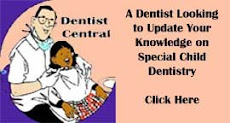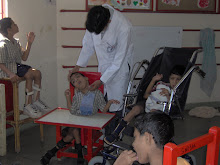- History
- Rationale
- Changes made and the reasons for those changes
- Clinical Implications
Friday, January 30, 2009
Antibiotic Prohylaxis : Does it Work
History of the anitbiotic prophylaxis regimen
 from Wilson W et.al Prevention of infective endocarditis: Guidelines from the American Heart Association: A guideline from the American Heart Association Rheumatic Fever, Endocarditis and Kawasaki Disease Committee, Council on Cardiovascular Disease in the Young, and the Council on Clinical Cardiology, Council on Cardiovascular Surgery and Anesthesia, and the Quality of Care and Outcomes Research Interdisciplinary Working Group
from Wilson W et.al Prevention of infective endocarditis: Guidelines from the American Heart Association: A guideline from the American Heart Association Rheumatic Fever, Endocarditis and Kawasaki Disease Committee, Council on Cardiovascular Disease in the Young, and the Council on Clinical Cardiology, Council on Cardiovascular Surgery and Anesthesia, and the Quality of Care and Outcomes Research Interdisciplinary Working GroupRationale of antibiotic prophylaxis in dentistry


The reasons for change and changes made

Patients already receiving antibiotics. If a patient is already receiving chronic antibiotic therapy with an antibiotic that is also recommended for IE prophylaxis for a dental procedure, it is prudent to select an antibiotic from a different class rather than to increase the dosage of the current antibiotic. For example, antibiotic regimens used to prevent the recurrence of acute rheumatic fever are administered in dosages lower than those recommended for the prevention of IE. Patients who take an oral penicillin for secondary prevention of rheumatic fever or for other purposes are likely to have viridans group streptococci in their oral cavity that are relatively resistant to penicillin or amoxicillin. In such cases, the provider should select either clindamycin, azithromycin or clarithromycin for IE prophylaxis for a dental procedure, but only for patients shown in Box 3![]() . Because of possible cross-resistance of viridans group streptococci with cephalosporins, this class of antibiotics should be avoided. If possible, it would be preferable to delay a dental procedure until at least 10 days after completion of the antibiotic therapy. This may allow time for the usual oral flora to be re-established.
. Because of possible cross-resistance of viridans group streptococci with cephalosporins, this class of antibiotics should be avoided. If possible, it would be preferable to delay a dental procedure until at least 10 days after completion of the antibiotic therapy. This may allow time for the usual oral flora to be re-established.
Patients receiving parenteral antibiotic therapy for IE may require dental procedures during antimicrobial therapy, particularly if subsequent cardiac valve replacement surgery is anticipated. In these cases, the parenteral antibiotic therapy for IE should be continued and the timing of the dosage adjusted to be administered 30 to 60 minutes before the dental procedure. This parenteral antimicrobial therapy is administered in such high doses that the high concentration would overcome any possible low-level resistance developed among mouth flora (unlike the concentrationthat would occur after oral administration).
Patients who receive anticoagulants. Intramuscular injections for IE prophylaxis should be avoided in patients who are receiving anticoagulant therapy (Class I, LOE A). In these circumstances, orally administered regimens should be given whenever possible. Intravenously administered antibiotics should be used for patients who are unable to tolerate or absorb oral medications.
Patients who undergo cardiac surgery. A careful dental evaluation is recommended so that required dental treatment may be completed whenever possible before cardiac valve surgery or replacement or repair of CHD. Such measures may decrease the incidence of late PVE caused by viridans group streptococci.
Wednesday, January 21, 2009
Wheelchair... Wheel Where????
 In the last couple of posts we have looked at access, but very often even when our work spaces are accessible enough to accommodate a wheelchair, we are confused about the transfer of the patient. DCSN looks at how to transfer a patient from the wheelchair to the dental chair or alternatively how we can treat the patient in the wheelchair itself.
In the last couple of posts we have looked at access, but very often even when our work spaces are accessible enough to accommodate a wheelchair, we are confused about the transfer of the patient. DCSN looks at how to transfer a patient from the wheelchair to the dental chair or alternatively how we can treat the patient in the wheelchair itself.Transferring a Patient from the Wheelchair to the Dental Chair
Transfer of the patient from the wheelchair can be a scary experience for both the patient and the inexperienced dentist. Factors that will determine the actual success of the transfer include
- · Whether the patient is able to transfer himself or requires assistance
- · The Ability of the care giver to give help
- · The skill and experience of the dental staff
Keeping in mind the above mentioned parameters the National Institute of Dental and Craniofacial Research (NIDCR) has proposed the following six steps to a safe wheelchair transfer
STEP 1: Determine the patient's needs
Ask the patient or caregiver about
a) preferred transfer method
b) patient's ability to help
c) use of special padding or a device for collecting urine
d) probability of spasms
Reduce the patient's anxiety by announcing each step of the transfer before it begins.
STEP 2: Prepare the dental operatory
· Remove the dental chair armrest or move it out of the transfer area.
· Relocate the hoses, foot controls, operatory light, and bracket table from the transfer path.
· Position the dental chair at the same height as the wheelchair or slightly lower. Transferring to
STEP 3: Prepare the wheelchair
· Remove the footrests.
· Position the wheelchair close to and parallel to the dental chair.
· Lock the wheels in place and turn the front casters forward.
· Remove the wheelchair armrest next to the dental chair.
· Check for any special padding or equipment
STEP 4: Perform the two-person transfer
· Support the patient while detaching the safety belt.
· Transfer any special padding or equipment from the wheelchair to the dental chair.
· First clinician: Stand behind the patient. Help the patient cross his arms across his chest. Place your arms under the patient's upper arms and grasp his wrists.
· Second clinician: Place both hands under the patient's lower thighs. Initiate and lead the lift at a prearranged count (1-2-3-lift).
· Both clinicians: Using your leg and arm muscles while bending your back as little as possible, gently lift the patient's torso and legs at the same time.
· Securely position the patient in the dental chair and replace the armrest.
| THE TWO-PERSON TRANSFER | |||||
| | ||||
STEP 5: Position the patient after the transfer
· Center the patient in the dental chair.
· Reposition the special padding and safety belt as needed for the patient's comfort.
· If a urine-collecting device is used, straighten the tubing and place the bag below the level of the bladder.
STEP 6: Transfer from the dental chair to the wheelchair
Position the wheelchair close to and parallel to the dental chair.
· Lock the wheels in place, turn the casters forward, and remove the armrest.
· Raise the dental chair until it is slightly higher than the wheelchair and remove the armrest.
· Transfer any special padding.
· Transfer the patient using the two-person transfer (see step 4).
· Reposition the patient in the wheelchair.
· Attach the safety belt and check the tubing of the urine-collecting device, if there is one, and reposition the bag.
· Replace the armrest and foot rests.
Working on the patient in the Wheelchair
One of the simplest ways to overcome the problem of patient access to the dental chair is by providing the treatment in the wheelchair itself, without transferring the patient. Conventional wheel chair based dentistry usually does not permit sitting down dentistry. The wheelchair is wheeled close to the instrument tray of the dental chair and the safety brakes are applied. The operator then stands behind the patient and is able to perform the necessary procedures.
Though greatly convenient to the patient this form of dentistry presents certain challenges to the operator. It may not always be possible to get adequate access because of constrains of space. The positioning of the suction may present a problem as the suction apparatus of a conventional chair is in the direction opposite to that of the patient. Similarly, alternate arrangements have to be made for the provision of a spittoon as the patient will not be able to reach the spittoon attached to the chair. Lastly the positioning of the patient is upright; this may pose a problem, especially when working on mandibular teeth where a more reclined position is favorable.
 The adjustable dental platform, the ramp allows the reclining of the wheelchair
The adjustable dental platform, the ramp allows the reclining of the wheelchair




 click on image to play video
click on image to play video





